Category: Hunting Blog
Why the Buffalo Food Plot System?
Years ago the great prairie was always covered with vegetation. The forage there grew as many days throughout the year as possible. In this environment there grew a variety of plants.
Buffalo roamed the prairie. Their herd movements along with wildfire served the regenerative process to build those great soils.
As the North American continent was settled, farmers used European farming methods which included plowing the soil. This practice resulted in soil erosion and compaction. Soil compaction prevents the soil from absorbing water which results in run off and more soil erosion. In addition to inches (or feet in some areas) of soil being lost, so were important nutrients. Farmers developed sophisticated equipment and fertilizers in an effort to compensate for the soil quality reductions caused by these practices.
The Buffalo System is an improved practice that seeks to replicate the natural cycles of the great prairie. I’ve been using them here on The Proving Grounds with a resulting increase in soil fertility and soil actually created.
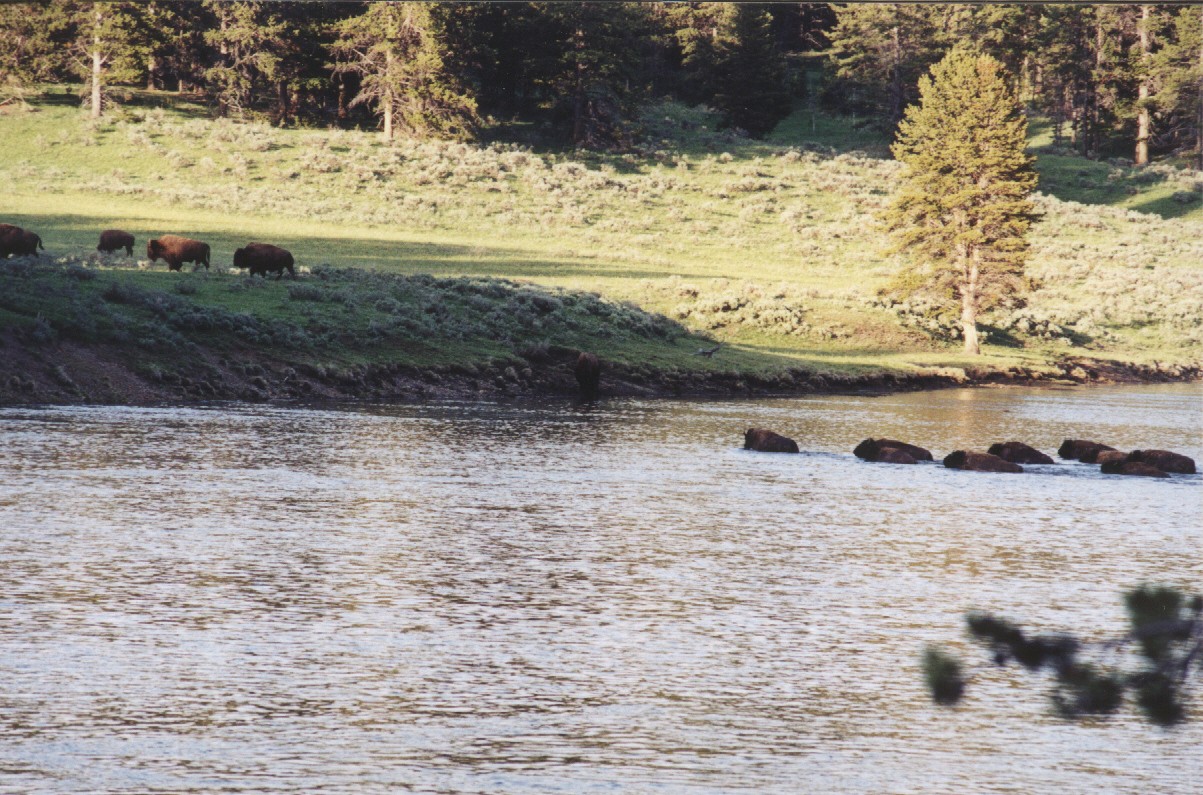
I am a strong advocate for this system of food plot management as the benefits for soil conservation, animal health, and the overall environment are tremendous.
I’ve used a variety of planting methods for food plots over the years. Food plots are a key tool for improving whitetail nutrition and hunting opportunities. GrowingDeer was founded to provide hunters information so that they can have better hunting, bigger antlers. The “Buffalo System” is among, if not the, best technique I’ve found so far to produce better food plots and benefit the soil.
Next week I’ll share another benefit of this improved method for planting and maintaining food plots.
GrowingDeer, food plots and enjoying Creation,
Grant
Food Plots: Learning and Growing
Food plot establishment and management techniques and the seed varieties have improved significantly during the past 25+ years. In 1995 Tracy and I visited New Zealand to learn about the forage varieties they grew to enhance antler growth in the red deer raised for meat and velvet antlers. From that visit, we brought back information that transformed the way I approached food plots and forage for whitetails.
On my hunting property (which I refer to as The Proving Grounds) I’ve researched, tested and implemented food plot practices and seed blends that maximize the quantity of quality forage. If these seed blends and rotations work here they will work on any property in the whitetails’ range. I’ve found a partner in Eagle Seed that combines my research and their expertise to get quality seed and seed blends with the right ratio of forage blends so that food plots are easily successful for food plot farmers.
I use Eagle Seed’s fall blend. This blend serves as a time released food plot throughout the hunting season with some varieties growing and being more attractive during the early, mid, and late season. The blend produces an attractive food source throughout the entire fall. It’s the backbone of our hunting sites and providing the herd quality forage throughout the fall and winter.
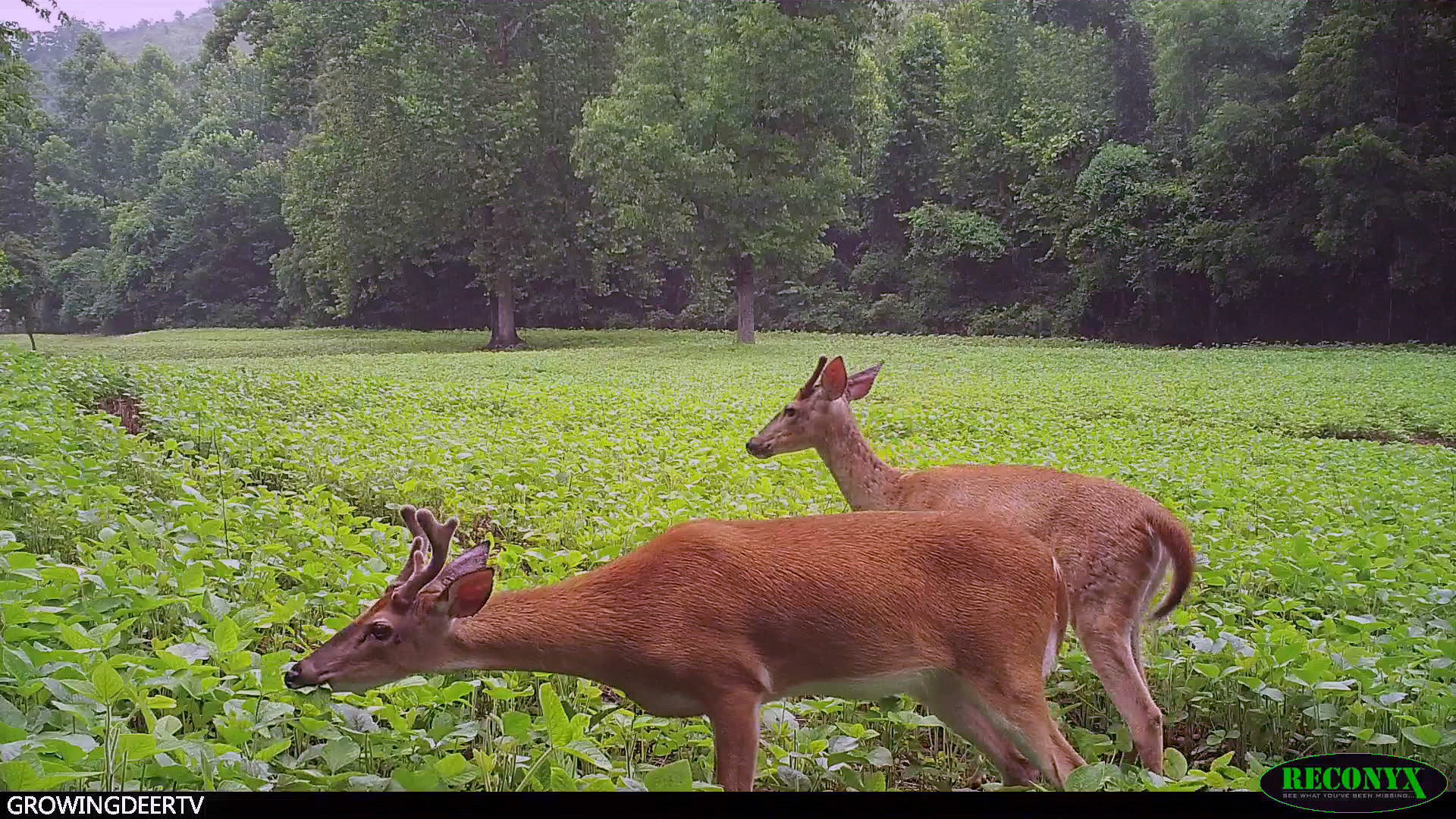
I’ve used Eagle Seed forage soybeans for many years. Eagle Seed forage soybeans provide the most quality forage for the longest time of any crop I’ve tested. Several universities have also published on the amount of quality forage these soybeans produce! Deer forage on the Eagle Seed forage soybeans green leaves then the standing grain after frost. Young soybeans are one of the most attractive plants to deer. In areas with a high deer population or in small food plots it can be difficult to maintain a healthy stand of soybeans due to heavy browse pressure. This problem can be solved with trigger finger management (reducing the number of deer) or using a small electric fence and protecting the young soybeans
Poor soil quality can limit forage growth and make it taste bitter. Building a good layer of soil over time can do wonders for food plots. Due to past forest and land practices, there was not a good layer of soil at The Proving Grounds when Tracy and I purchased it. Through the years I’ve learned techniques we call the Buffalo System to improve the soil and forage quality. This soil quality improvement system is less expensive and requires less time than the traditional lime, fertilizer, till and plant system. I’ll be sharing more on the Buffalo System throughout videos coming soon.
Regardless of where you hunt, you should focus on getting deer the nutrients that they need to grow healthy and strong. You can create the opportunity for a memorable hunting season next fall by maintaining great food plots during the coming year. If you’re new to food plots, click HERE to see videos showing the details of our food plots programs over the years or use the search function on this website to learn about a specific technique or food plot crop.
Growing food plots and enjoying Creation,
Grant
Tip for Food Plot Success: Wait On Warmer Soil
It’s been raining or snowing throughout much of the whitetail’s range recently. This unusually cold, wet spring has affected not only the turkey hunting, but also delayed our spring food plots. These same conditions of being too cold and wet extend across much of the country.
Most crops that are planted this time of year have a relatively large and soft seed, such as Eagle Seed forage soybeans, corn, sunflowers, etc. These soft, large seeds easily absorb water as part of their germination process. They also need water to break dormancy yet also require a minimal temperature to begin the germination process combined with a higher temperature to stimulate and increase the rate of germination and development.
Cold water (without an increase in soil temperature) will often result in the seeds swelling but not germinating or germinating and dying. The longer a seed, especially a relatively soft seed, remains in the soil without germinating there are more chances for insects, diseases, or fungus to attack.
The result of delayed germination of soft seeds is almost always a reduced seed and/or plant vigor. It’s common for 50% or more of large soft seeds that are planted during bad conditions (especially when it’s too cold and wet) to die in the ground before they germinate. The surviving seeds can have reduced vitality even as a maturing plant (like a fawn that received poor nutrition during development or the first few months of life).
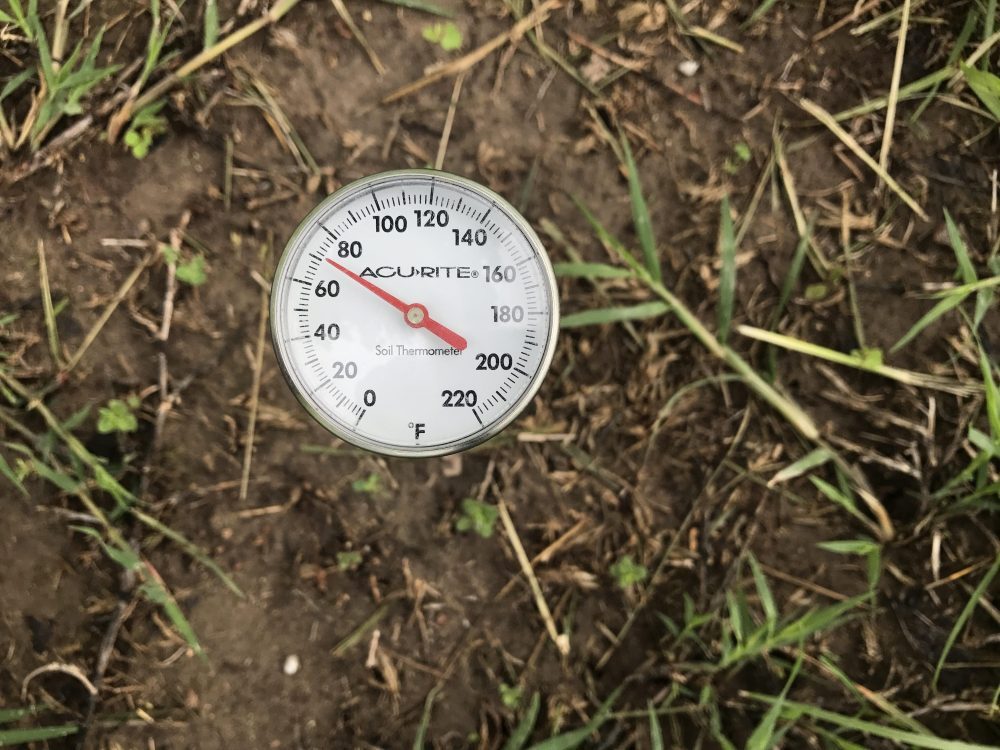
The first tip to ensure that you have a successful food plot crop is to plant when the soil temperature is within the correct range for your seed. For example, soybeans have the best germination rate when there’s adequate but not too much soil moisture and the soil temperature is a minimum of 60 degrees.
Soil scientists recommend testing the soil temperature at 9 am as this is usually the coldest time of day at 2” deep in the soil. The soil cools all night and begins to warm once the sun is at an angle that its radiant heat impacts the soil.
One of the best tools to ensure a successful crop is a soil thermometer or checking one of the many soil temperature websites. I use a soil thermometer (usually about $10 at most feed and seed stores) as soil cover, color of soil, soil moisture etc., all can affect the soil temperature substantially from field to field.
If you’re planting food plots soon, don’t count on going by traditional or published planting dates. For the best chance of success plant when the local conditions are appropriate with soil temperature and enough moisture to ensure germination and growth.
As we’ve all seen recently it’s vitally important to keep an eye on the extended weather forecast!
Planting food plots and enjoying creation,
Grant
Turkey Hunters Ask: Did You Hear That Gobble?
I really enjoy turkey hunting. A huge part of turkey hunting is listening to the birds call and using calls to attract them. It’s a super interactive hunt! This form of hunting requires good hearing. Often my daughters or someone younger than me that I’m hunting with will say “Did you hear that gobble?”
I sometimes have to respond “No.” I shot a lot as a kid but didn’t use hearing protection. This damaged my hearing. I wish I had used hearing protection – even when hunting! Just one shot can result in damage to your sense of hearing.
Back in the old days we never thought about wearing hearing protection. There were some shooters that might wear ear plugs or cover their ears when others were shooting. However, now that I know “better” I don’t shoot a firearm without hearing protection. The experts say: “Exposure to noise greater than 140 dB can permanently damage hearing. Almost all firearms create noise that is over the 140-dB level. A small .22-caliber rifle can produce noise around 140 dB, while big-bore rifles and pistols can produce sound over 175 dB.”
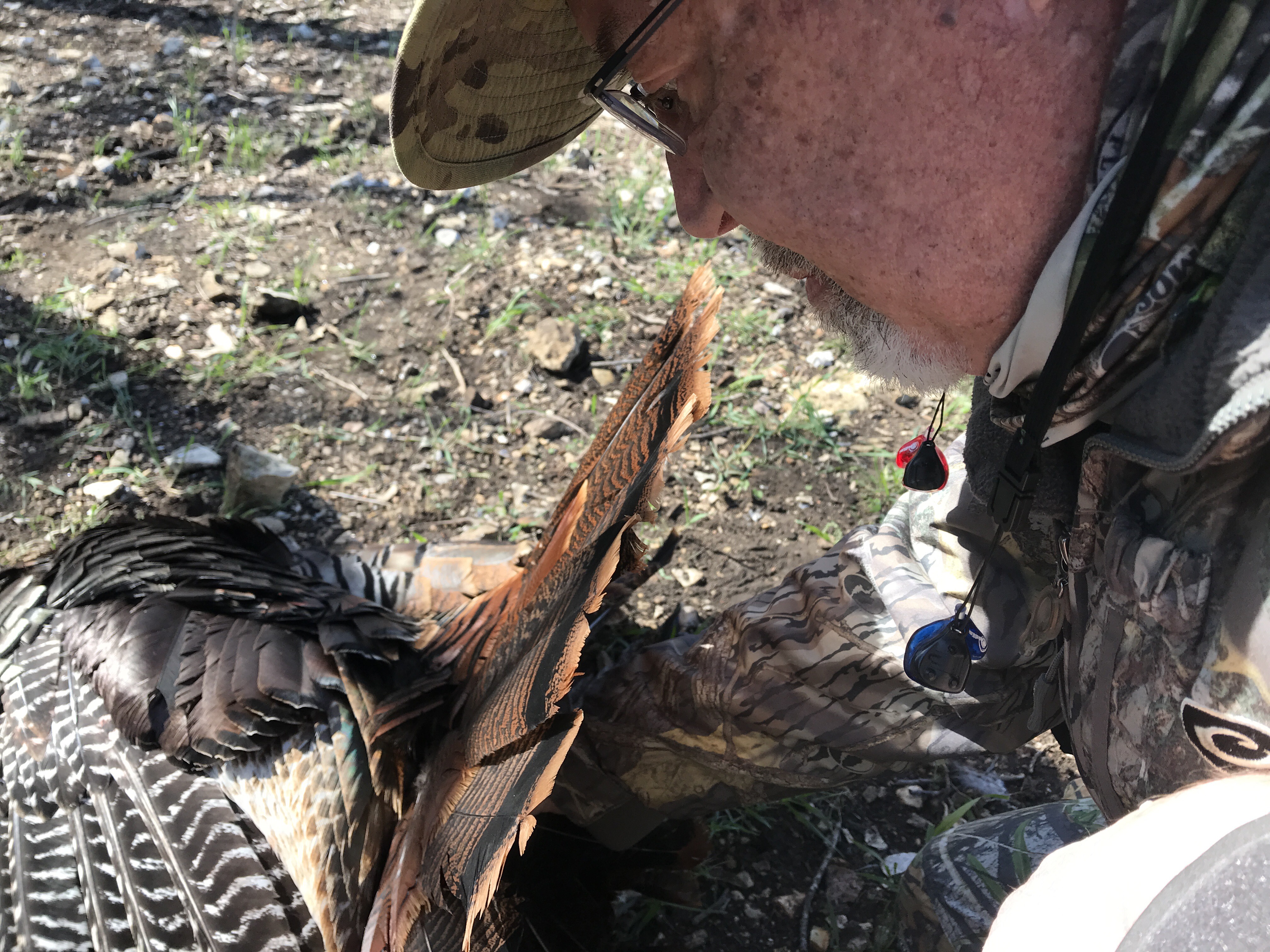
Here at The Proving Grounds I require all our hunters to wear hearing protection, whether it be when sighting in the guns or during the hunt itself. I also expect any by-standers, hunting partners, and cameramen to use hearing protection. I’m that serious about it. If we’re on the range, a shout of “fire in the hole” goes out to make sure everyone protects their ears – if nothing more than throwing their hands over their ears or simple ear plugs.
Research shows that only about half of shooters wear hearing protection all the time when target practicing. Hunters are even less likely to wear hearing protection because they say they cannot hear approaching game or other noises.
Years ago I was introduced to the electronic earmuffs that allow shooters to hear what’s going on around them. When you wear the electronic earmuffs, they allow you to still hear (some even amplify the sounds) then silence the blast of the shot. These earmuffs are great and what most of the hunters on our team wear. A good example of this was in the recent turkey hunt where Chase shot his first tom. Chase sets a good example with the earmuffs on his head, ready to be quickly put in place before he takes the shot. (Click HERE to watch the hunt.)
As I mentioned, because I’ve spent most of my life shooting I’ve lost a significant amount of my hearing. A friend told me about a product that could not only protect my hearing, but actually assist me in hearing those important sounds I need to hear in the woods – like the sound of a turkey gobble or a critter walking in the leaves. You’ll see me wearing a small, custom-fit digital hearing protection system found at https://www.wildear.com/ Since they are custom fit, they stay in my ears and are comfortable all day long. I don’t have to worry about adjusting them and making a lot of hand movements that might alert a gobbler.
I have no doubt that if I hadn’t protected my hearing during these recent years I’d be hunting turkeys by blind calling or setting on plots – because I wouldn’t be able to hear them calling.
Remember – even one shot of a firearm without hearing protection can result in a decrease in your sense of hearing.
I encourage you to protect your hearing so you can continue to enjoy hearing all the sounds during the spring. It will likely help you locate a tom and will certainly help you enjoy all activities that much more.
Enjoying Creation,
Grant
Turkey Hunting Tips for Tough Days
Turkey hunting is not always easy. We all love it when the gobblers respond to our calls then come in strutting with big fans, long beards and wings dragging. But it doesn’t always happen that way. Some days hunters just have to work harder and smarter to get those toms in range.
The weather has played havoc with turkey hunting these past few weeks. We’ve had hunters from Tennessee, Kansas, Missouri to Wisconsin and states in-between share their frustrations with hunting and the unusual spring weather: colder temperatures, rain, and even snow.
For us and others, it’s been a tough year to locate gobblers. Hunting in Tennessee, then Kansas and now Missouri has had us pulling out all the tools and tricks to get birds in range.
Here in Missouri, it’s early in the season, the toms seem to be henned up. When they are with the hens it is hard to entice them away with calling.
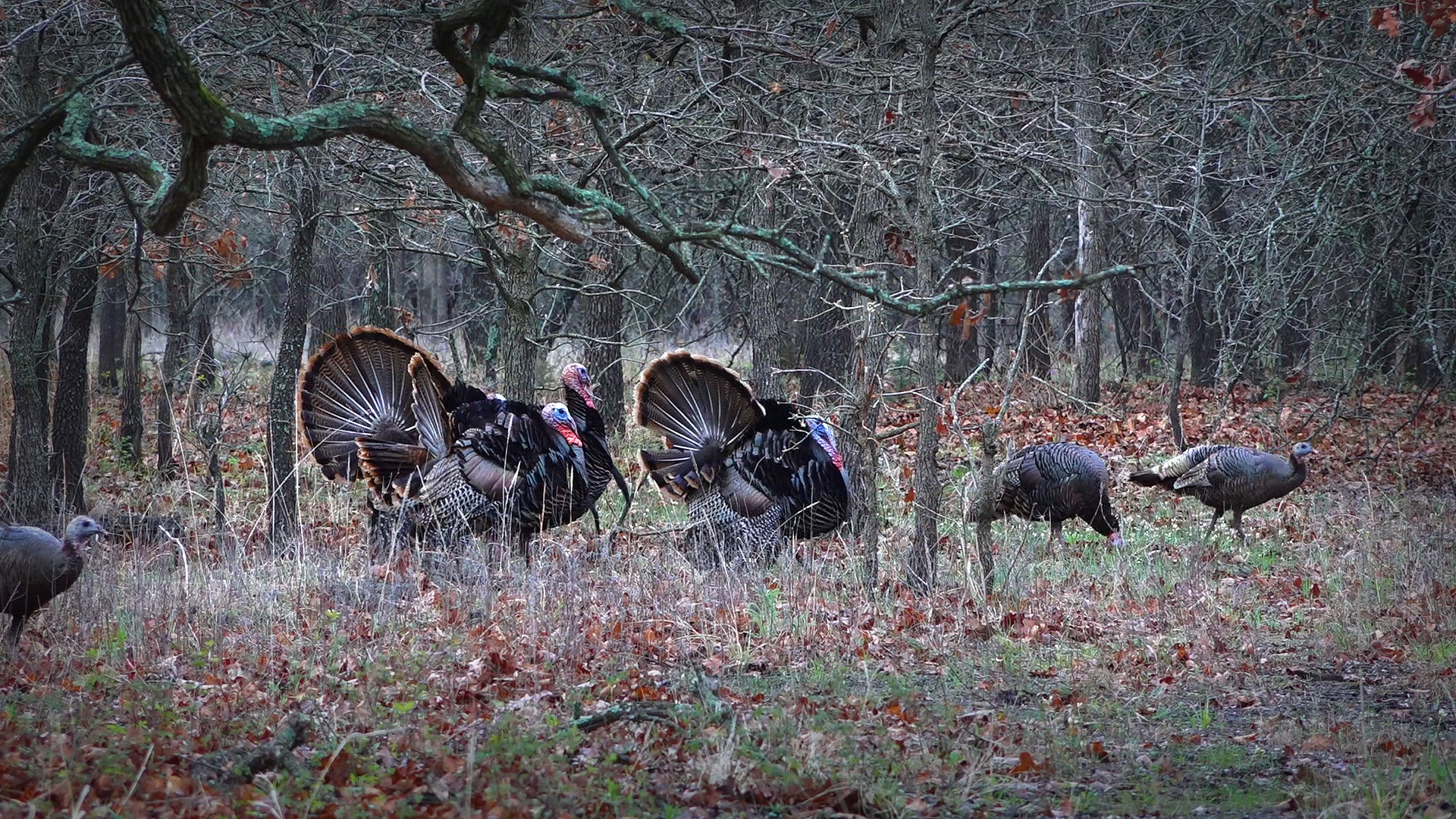
Here are some tips to use if you find yourself in a similar situation:
- Try to call hens in as the toms often follow. Use soft feeding calls: yelp, soft purr, or relaxed (not aggressive) clucks.
- Set up your decoys in feeding positions.
- If you KNOW there are toms in the area – sit still and wait. It’s not necessarily fun since the interaction and action is missing but patience can be your best strategy to punch a tag when that tom quietly comes into the field.
- Every day is different. Just because the birds don’t respond one day, they may the next. Keep trying.
- Weather: birds are still out there when it’s cold and windy, they’re quiet but still moving and feeding. Figure out where they are roosting and feeding then get in-between or in front of them.
We had two good examples of turkey hunts last year where the unseasonably cool and wet spring posed challenges during turkey season. You can see how changing locations and strategies paid off for Clay and I in this video when turkey hunting during the late season and the toms went quiet and did not respond to our locator calls.
Also, Heath and Lindsey’s Kansas hunt last year required a change in strategies. After a few days of colder weather they went out for a hunt. The weather during the first morning of their hunt seemed perfect but the toms were silent. They adjusted their strategy for the afternoon and soon had a gobbler in range. Watch that hunt by clicking here.
Our encouragement to you if you haven’t tagged yet is to remember the three “P’s” of turkey hunting: patience, persistance and position.
While you’re hunting, take time to listen not just to the gobblers but also for what the Creator is saying to you.
Chasing longbeards,
Daniel
Meet Jacob Hamilton: GrowingDeer Intern
One of the goals here at GrowingDeer is teaching lessons to future generations of hunters that will play a role in hunting and wildlife conservation. One way we do this is teach wildlife and habitat management techniques to our interns. These are young men and women who volunteer at The Proving Grounds to get hands-on experience either during their college coursework or soon after graduation.
You often see these interns on GrowingDeer videos. Our current interns are Tyler McKinney and Jacob Hamilton. We introduced Tyler to you last fall in this blog.
Now it’s time to share more about Jacob so that you can know who he is when you see him in the weekly videos. He is from Jackson, TN and graduated from Austin Peay State University in December of 2016. He has a degree in Agriculture Science with an emphasis in Forestry and Wildlife Conservation. This school did not have a degree program in Wildlife Management so Jacob decided to intern with GrowingDeer to strengthen his knowledge base and jump start his career in wildlife. He hopes to one day work for a wildlife consulting firm or manage wildlife and forest resources in a state park.
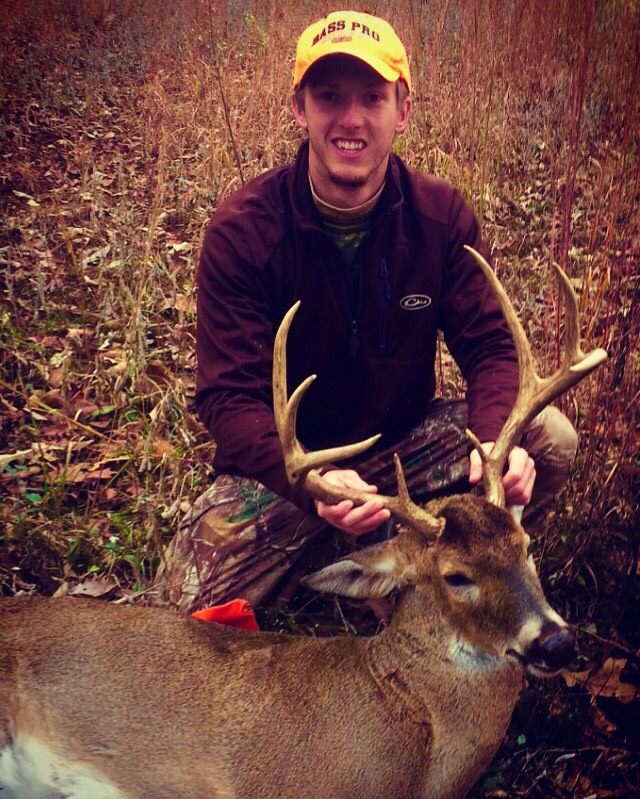
Jacob has been deer hunting for about 10 years. He killed his first deer at the age of 14 on his family property on a foggy morning during youth season. I asked Jacob to tell us about one of his favorite or most memorable hunting experiences. He enthusiastically shared with me how two years ago he killed a big 8 pointer that he had hunted over two seasons. He was especially proud of this buck because he really had to “work” to get him. It all started by planting food plots on a farm he had permission to hunt that was adjacent to his family land. He put in a clover food plot (keeping it mowed and sprayed), left standing beans at one end and groomed the CRP that was adjacent to it by putting in shooting lanes. He was disciplined and only hunted this plot with the right wind. When he didn’t succeed the first season, he moved his stand location down field. His work and perseverance paid off on a morning in late November. The buck came to the food plot, made a scrape and then Jacob took the 70 yard shot with his rifle.
Along with deer hunting, Jacob is an avid duck hunter! (Being from western Tennessee this is understandable!) He enjoys duck hunting because it’s more social: fellowship with good conversations in the duck blind, the interactive calling to the birds, and of course, the shooting action.
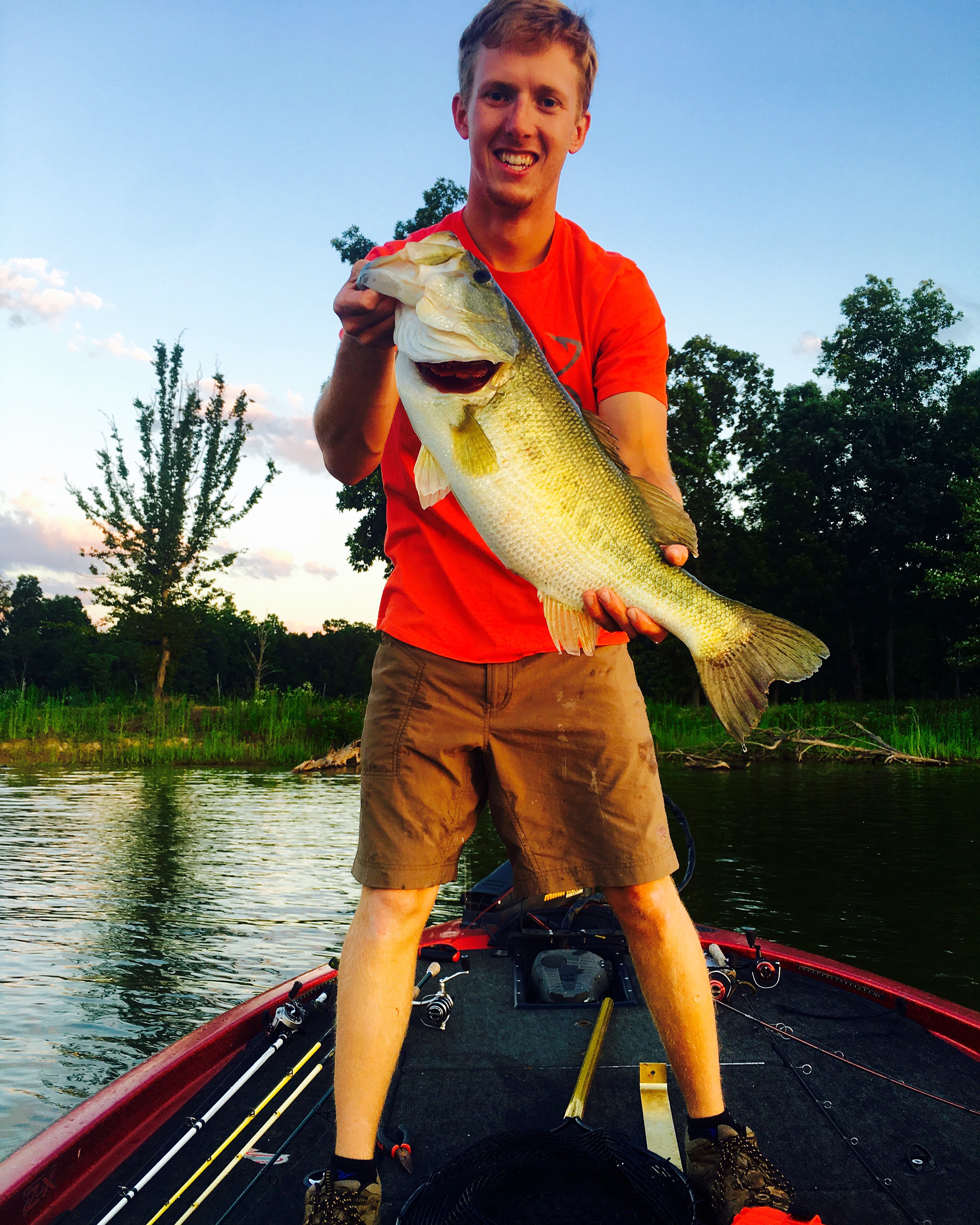
Jacob is an avid fisherman. Fishing has always been something his family does together. He joined and took a leadership role with the fishing team at his university. Under his leadership, the team grew and achieved solid national rankings at fishing competitions (ranked 27th and 30th out of 330 schools competing). When it’s not hunting season, you’ll most likely find Jacob on the water fishing. He is looking forward to the annual family fishing trip the last full week of April. For over 50 years the men in his family go to Kentucky Lake for a week of camping, fishing, corn hole and public land turkey hunting. There will be up to 40 men in his family from Texas, Tennessee, and even Idaho coming together for this outing.
We appreciate the time we get to spend with Jacob. He will be with us through the summer. Keep an eye out for him in our weekly videos and on Facebook where I’m sure we’ll be showing you more photos of his fishing and hunting success!
Blessed to be enjoying God’s Creation,
Tracy Woods
For the GrowingDeer Team
If you or someone you know is interested in becoming an interns with GrowingDeer, please click here for more information.
Turkey Hunting Strategies: My Favorite Decoy Setups
I’ve recently shared tips from world champion turkey callers that will help us all become better at turkey calling and hunting this season. Becoming a proficient caller is the first key to get a tom to close the distance.
Once that tom has responded to the call it’s not uncommon for him to “hang up”. I’ve found that turkey decoys are an effective tool to encourage a tom to close the gap. (We use Montanna Decoys.)
My decoy setups are chosen based on the different hunting situations. These are things like the local terrain, where the birds are in the breeding season and the habitat. Below are several decoying strategies I use.
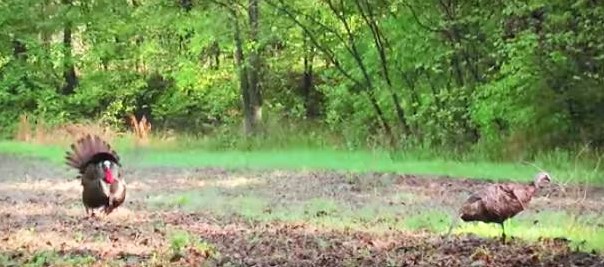
Lone Hen: My initial “go to” when I am turkey hunting is the lone hen. A lone hen has proven to be very effective in catching the attention of a gobbler. (The Miss Purr-fect by Montanna Decoys is the ideal decoy for the lone hen strategy.)
Jake/Hen combo: A jake decoy with a hen can be a strong attractant to a dominant tom. I use this combo frequently at the beginning of the hunting season when the toms are sorting out their dominance. I position the jake about two to three feet away from the hen then put the head up so that red head draws the attention of the dominant gobbler. It’s a good idea to put the lone hen in a feeder pose to create a more natural and enticing setup. Think about it: if both are upright and alert they are sending communicating that something has them nervous. As the season progresses, this remains an effective setup. As the days go on, hens leave and go sit on the nest. When it appears that a jake still has a hen with him it can make a boss tom jealous and get him fired up to come into range! One of my favorites is having a jake sit right behind a hen when she’s in the breeding pose.
Breeder Hen/Full Strut Tom: When toms are running together and working to sort out who’s the boss, another effective decoy strategy is to put a hen decoy in a breeding position in combination with a strutting tom. I set the Miss Purr-fect hen decoy on the ground (without a stake) in a breeder pose, then add a Papa Strut behind her. The local toms will see the “intruder” and come in to see who’s messing with their hen!
Three Hens: Setting up three hens is an almost irresistible setup for a tom. It’s especially effective if you’re hunting an area with bully jakes and gobblers won’t come in. But what gobbler is not coming in to three hens? When you stake out the hens, put one in the breeding pose, another in a feeding pose and another in an alert pose.
I mentioned above that we use Montana Decoys. These are easy to carry, multiple decoys can fit into your vest and they are very versatile. The days of lugging a bagful of hard, loud decoys are over! They just fold up to fit in your vest; they are adjustable and have different leg pole sleeves to enhance various poses. Think about the message you want to send when posing the heads of the decoys and add movement by using their Motion Stake.
We’ve used all these setups at different times and in different states. Each one has proven successful during the right conditions. When scouting and then during the hunt, read the mood of the turkeys and create your decoy strategy around those observations.
For more details on how to setup your decoys, click here to get a free guide from Montanna Decoy.
Chasing turkeys, setting up decoys and enjoying Creation,
Grant
Why Hunters Come to GrowingDeer Field Days
We’ve been having Field Days at The Proving Grounds for many years. Each time we welcome the visitors as strangers then find that by the end of the weekend we’ve made new friends. Most all the folks attending the tour watch GrowingDeer and this is our chance to get to know them just a little better. We love talking to them, hearing about their goals for their hunting properties, their hunting stories, and their families.
There were so many kind, friendly folks here at the Field Event: 128 folks from Georgia to New York to Michigan to Texas. Each and every one of them were passionate about deer hunting and deer management. Here are a few of the folks and just a little insight into why they came.
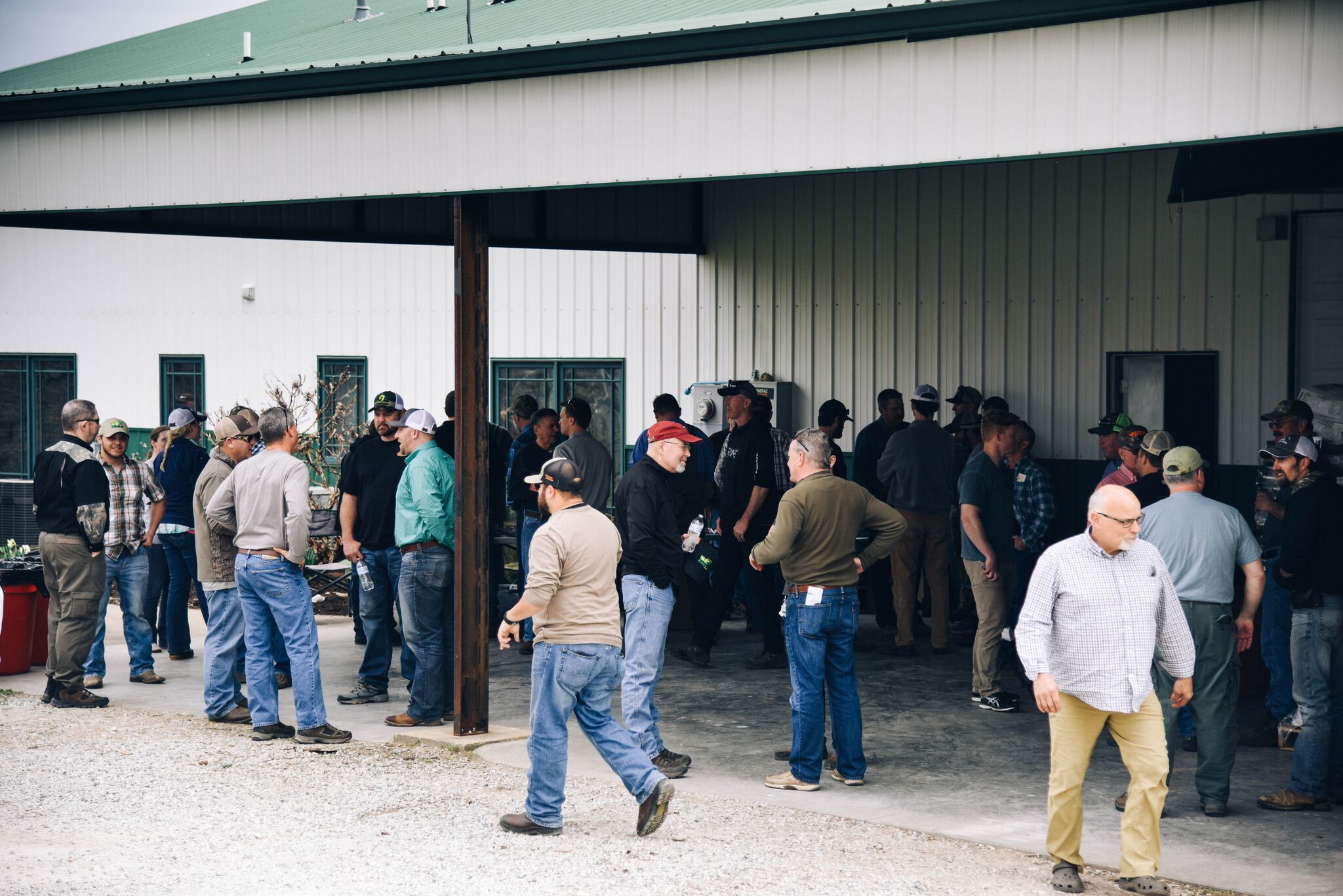
Ron came all the way from Savannah, Georgia to see first-hand how we are managing The Proving Grounds for better hunting. I talked to Ron during the social time on Friday before the bow shoot started. He said his hunt club members were all a bit “old school”. Ron has taken the initiative to improve the club. He was interested in learning how to better improve the food plots in the sandy soils of eastern Georgia. The presentations and field examples of cover crops, crop rotation, and the “Buffalo system” we are using gave him ideas to take back and implement on his club.
Rick and Tina, a couple with hunting land here in Missouri came to the Field Day event looking to find a balance for their property between managed food plots and native vegetation along with how to use native grasses for bedding areas. The food plot demos and presentations along with the up-close, personal looks at the areas with prescribed fire were very helpful to them. One of the last questions by Tina was for a recommendation of the best type of boot to wear when working a prescribed fire. They plan on cutting more cedars and implementing prescribed fire on their property!
Paul and his son from the St. Louis, MO area; they came looking for tips to improve their hunting property – specifically how to get it to hold more deer.
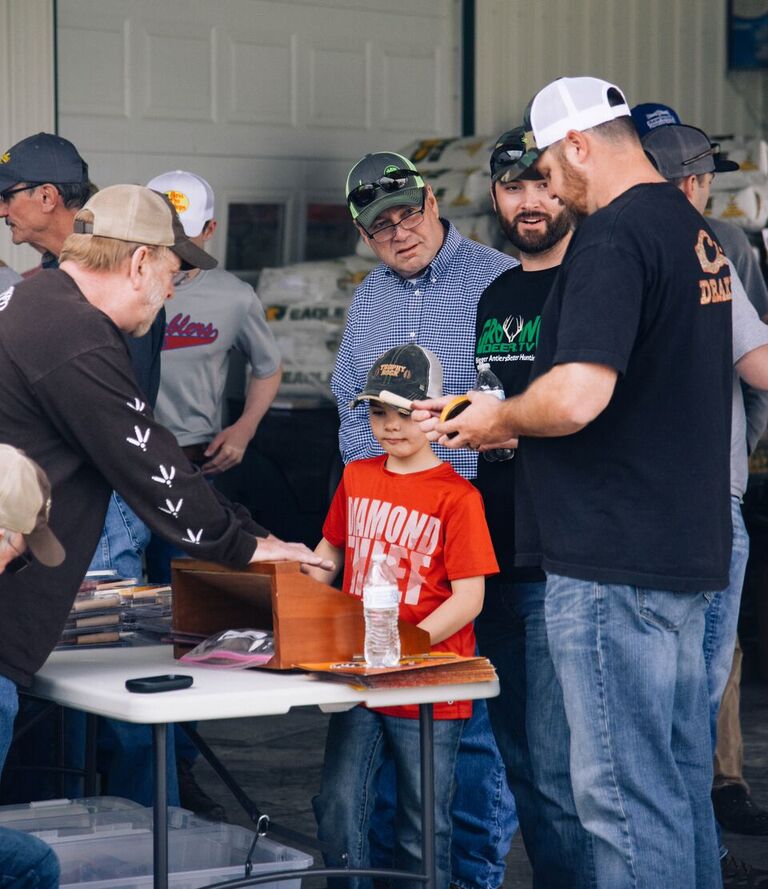
Stephen and his son Chris from Houston, Texas: Stephen has been hunting for many years. He wanted to introduce his step-son Chris to hunting. He started by showing Chris the video where young Rylan White was hunting. After watching Rylan’s hunt, Chris decided that if Rylan could hunt, he could too! Now this young boy is “ate up” with hunting and watches all the GrowingDeer videos. Stephen and the family came to Branson for the weekend so that he and Chris could meet us and learn more about hunting. Chris had the biggest smile on his face all weekend as he listened to the field presentations and then, during the social times met Rylan White. It looked like the two of them were having a great time as they played around the office and had Crystal exhausted from hours of chase and fetch!
In addition to the social aspect of the weekend, Grant and Daniel were able to really jump in and get specific with some of the hunters with advice on their hunting land.
We spent some time getting to know Tom. He had retired to Florida but returned to his home state of Michigan to hunt at his club. The club is a lease on over 2,000 acres but with a lot of members in the lease. His concern: no one was harvesting does. He wanted to figure out a balance between deer and food. The reality was that he needed to harvest does…more than he could do himself. Daniel gave him advice on how to work with members of the club as well as increase the available food.
Daniel was able to spend time with Tim and Taylor from Illinois. Daniel reviewed their maps and discussed their current strategies for hunting the land. The final analysis was that their hunting strategies were good, but given they had the largest block of timber in the area, they needed a late season food source for after the harvest of the local ag crops. He encouraged them to use the timber more as a sanctuary and hunt the edges of the timber.
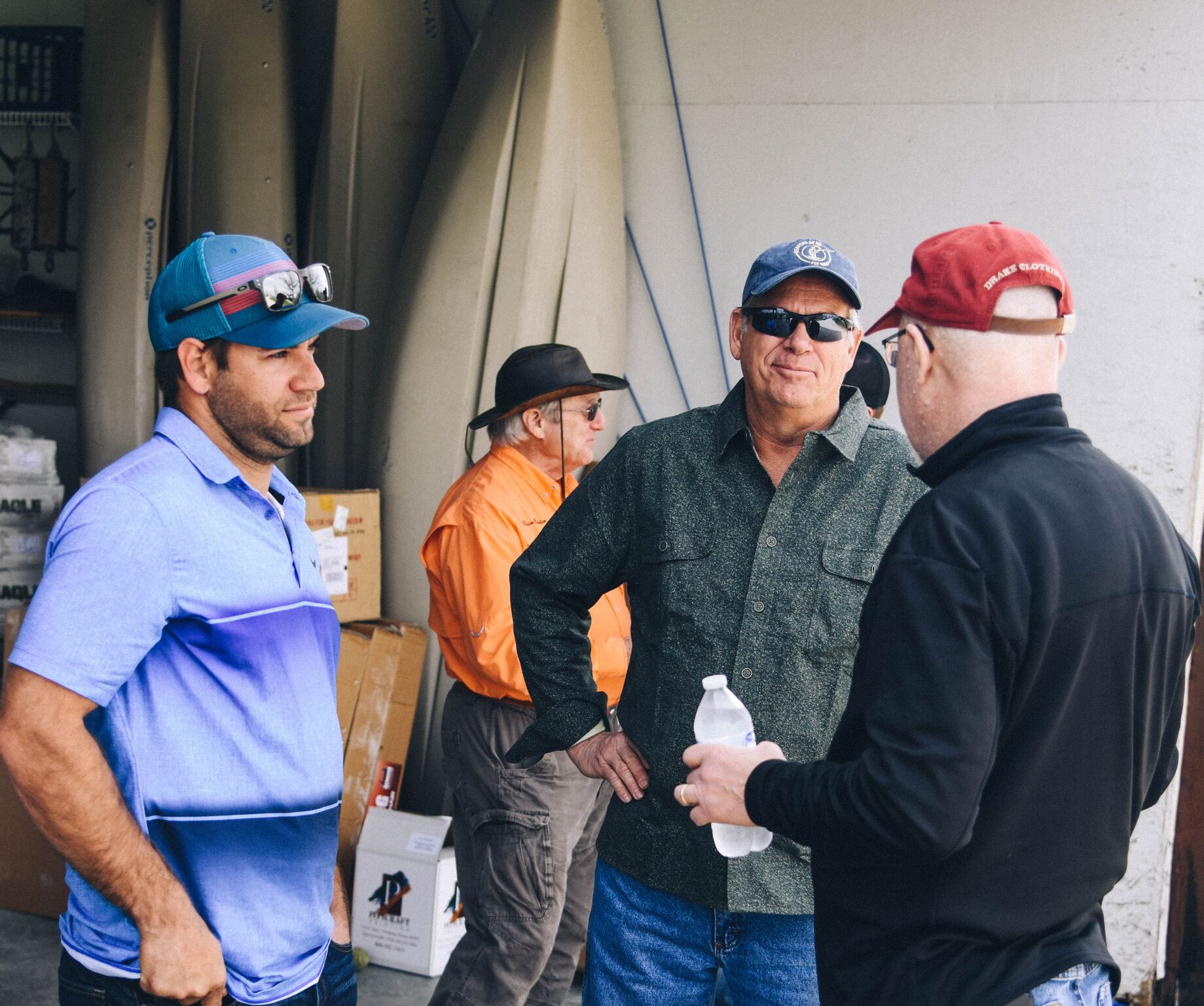
We try really hard to present information and answer the questions from the hunters at our field events. It’s intense, but rewarding for everyone.
On Monday morning, we received an email from Mr. Orf, one of our previous clients that attended the event for a first-hand look at The Proving Grounds. Mr. Orf had this to say after experiencing the GrowingDeer field day event: “I’ve been to a lot of seminar events like this for my business and I’ve not been to many that were as packed with really good information as this Spring Field Days.”
We’ll have highlights of the field day when we release the new video next Monday morning. Check it out and watch for tips that might help you with your deer hunting and land management objectives. It will also include a turkey hunting demo that received a very positive response.
A big thanks to all that came to the field day event. We were blessed by each and every one of you!
Enjoying His Creation and the spring rains –
Tracy
For the GrowingDeer Team
Turkey Hunting: 7 Important Tips for Patterning Your Shotgun
We’ve been preparing for turkey season – practicing our calls, doing a lot of prescribed fire and getting our decoys ready.
In addition to scouting and practicing turkey calls, this is the time of year to make sure and spend some time patterning your turkey gun. In my opinion, this is the most important thing to do before a hunt. (I recently patterned the 12 gauge before our Florida turkey hunt.)
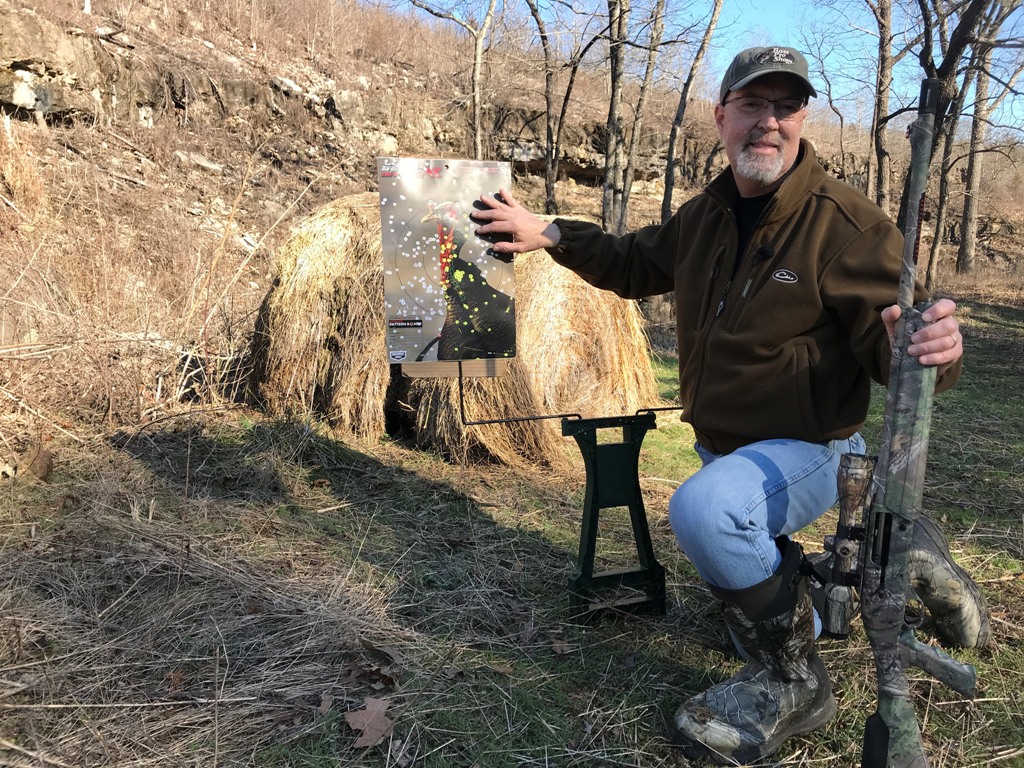
Here are a few tips to consider when you are patterning your shotgun:
-
- The most important aspect to remember when you head to the range is to grab your hearing protection. Always, always protect your hearing when shooting or when around loud equipment. Good hearing is vital to turkey hunting and enjoying Creation.*
- While this seems obvious, it needs to be said: shoot the same shell that you’ll be using when turkey hunting. Don’t go the cheap route and use an off brand when testing your gun. Know how both your gun and the load perform together.
- Since you are testing the accuracy of the gun, take out the other sources of error. Use a gun rest or shooting bench, shoot from a seated position and measure the guns performance, not yours. You can go to a shooting range or do what I do and use a Lead Sled and Stable Table from Caldwell Shooting Supplies.
- Test the gun at different yardages. Notice how the pattern changes as the distance increases because when you are in the field that tom might hold up at 40+ yards or surprise you and come in really, really close! Making a kill with a turkey gun can be easier at 30 yards than 10 yards. This is because the shot pattern of a turkey gun is smallest at close range. It would be much easier to miss a tom at 10 yards, due to the very tight pattern, than at 30+ yards.
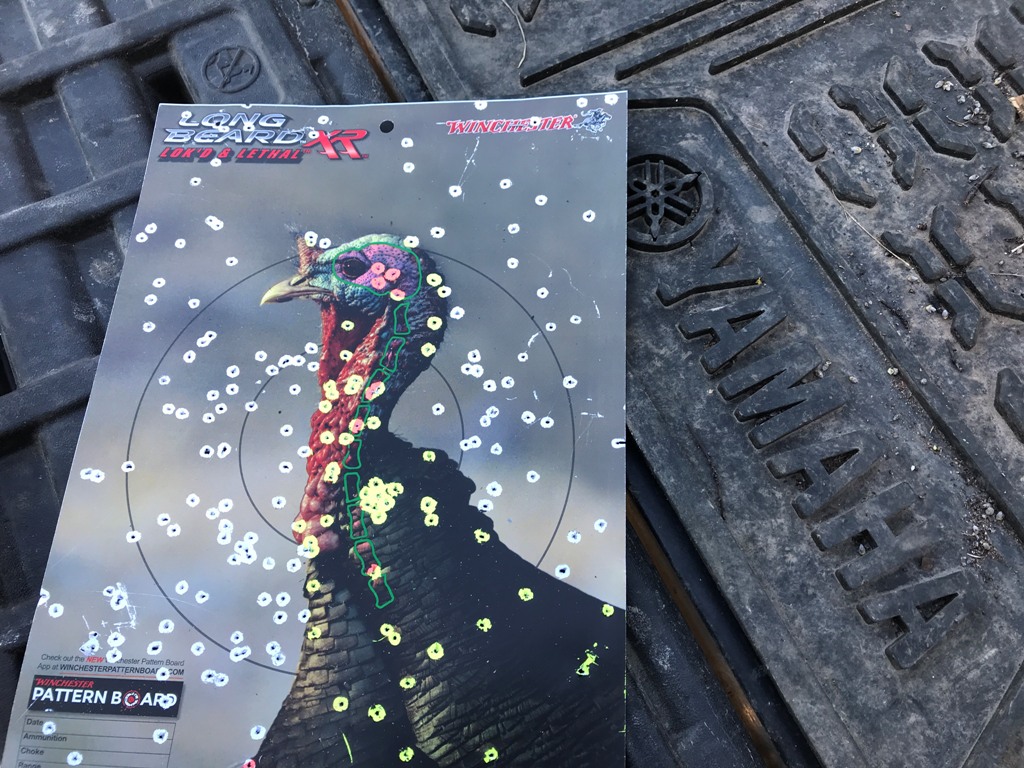
- Before you go to the range, check out this handy tool that I use: the Winchester Pattern Board Application on Winchester.com.
- What gauge shotgun will you be using? Consider the weight of your gear if you’re running and gunning. I have found that by carrying the light and collapsible Montana Decoys and switching to a 20 gauge, it’s a lot lighter when you’re standing on one ridge and that tom fires off on the other ridge. Winchester now has a 20 gauge in Long Beard XR. I love the idea of toting a 20 gauge over these Ozark Mountains.
- Think about the benefits of using a scope on your shotgun. If you’ve ever shot the Long Beard XR shells from Winchester, you know how tight they pattern. And if you’ve got a bird at 20 or 30 yards or even 15 yards, you could miss easily if you’re just using a bead. And if you’re at 40 yards, you want to make sure the gun’s bead isn’t covering the entire tom. Plus, a scope keeps your head down and you know exactly where your point of aim is going.
Many of our friends across the southern portion of the US are already out in the turkey woods. We’ll be doing the same soon as we travel to hunt in Tennessee!
When you’re out there – remember to take time, look around and thank the Creator for all His blessings and the ability to live in a country where we have the freedom to hunt.
Enjoy Creation,
Grant
*When I’m hunting I wear WildEar hearing protection. These have been great to wear in the field. Small and custom fit that protect your ears from extreme noise and gun blasts that also provide hearing enhancement. I’ve lost hearing from years of shooting without protection. The WildEar helps me to hear turkeys and other sounds in the woods that I cannot hear with my natural hearing.
The Most Important First Step for the Best Food Plots
For 15 years we’ve worked to improve the habitat and nutrition for white-tailed deer at The Proving Grounds. We named the farm The Proving Grounds because this may be one of the hardest places in North America to hunt and “grow” mature whitetails. We thought that if the tools, practices and strategies we use here for growing and hunting whitetails succeed, they can work anywhere there are white-tailed deer.
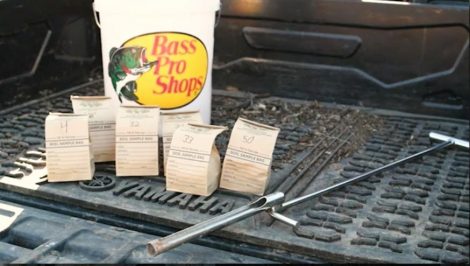
We’ve had proven success with getting scrawny Ozark deer to grow antlers and increase body weights that are above average in our area. These increases are simply a bi-product of healthy deer. By improving the native browse and adding high quality forage through food plots, we have enjoyed great hunting opportunities.
However, if the right quantity of nutrients isn’t in the dirt, the plants have no available nutrients to transfer to deer. Simply put, if deer don’t consume food produced from good dirt, they can’t reach their full potential.
Given this very simple, but important fact, if you’re planting food plots it is of great benefit to collect soil samples each year. The price of having a soil sample analyzed is one of the least expensive and most important tools I use as a deer manager.
The results of a soil sample include the soil’s pH, the amount of phosphorous, potassium and several other trace minerals (depending on the analysis requested). This information is then used to determine how much lime and fertilizer is needed to produce a quality crop based on the forage you wish to grow.
To get high quality forage and therefore give the deer a better opportunity to express their full potential, it’s critical to apply the appropriate quantity and quality of each element required for each crop. Make sure you note on the form submitted for each soil test, the exact crop or blend of crops to be grown in that plot. If you don’t, the lab will either not provide any recommendations or provide a generic recommendation. Omitting the specific crop that will be planted usually results in producing crops that aren’t as palatable or nutritious for deer.
I just received the soil test results from Waters Agricultural Laboratories for every food plot at The Proving Grounds. The soil management practices, cover crops and crop rotations used on those plots that have been established for several years indicate that the soil has significantly benefited from those practices. In fact, I have not had to put any fertilizer on my plots in four years because nutrients are held and recycled! Soil tests are a fabulous tool to make sure that your deer herd has quality nutrition available. Remember, if it’s not in the dirt, it can’t get to the deer.
Growing Deer together,
Grant





















